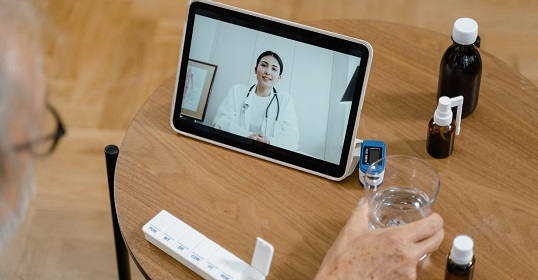Our Medical Analytics Software Development Services
Engineering high-scale distributed computing data platforms able to deliver reliable and fast insights from petabytes of healthcare data (e.g., billions of clinical and financial records for millions of patients) and maintain high-availability access for thousands of users daily requires specific software development expertise. We provide such expertise and build stacks that combine, clean, and enrich this data using thousands of analytics models and algorithms. Our BI consultant for healthcare works alongside engineering teams and healthcare stakeholders helping define the right KPIs, reporting needs, and strategic analytics frameworks to ensure these systems deliver measurable clinical and operational value.
 Data Integration Engineers
Data Integration Engineers
Our highly skilled data engineers automate the data flow between your analytics health solution platform and the internal data systems of healthcare providers and payers (Claims, Clinical, and more) to make high-quality data available to your customers with very low latency. They can work independently to build the data architecture, design, document, and test high-quality connectors and ingestion pipelines, integrate feeds of varying complexity, and contribute to both new customer setups and the support and enhancement of existing ones. We are ready to join your connector team as operational problem solvers who leverage leading-edge big data technologies (databases, database and cloud architecture, Python, DBT, NiFi, Hudi, Kafka, and AWS), have a strong understanding of healthcare data sharing practices and data standards, industry data metrics and benchmarks (PMPM by LOBs, MM trends, and more), and extensive data transformation experience (SQL, Scala, Spark).
 Data Infrastructure Engineers
Data Infrastructure Engineers
With expertise in health-tech systems (EHRs, clinical data, and more), our data infrastructure engineers create, implement, maintain, improve, and expand secure, high-performance, scalable, and stable full-stack web applications and data pipelines that handle sensitive data. They possess in-depth knowledge of database systems, experience working with database querying languages (SQL and others) on large multi-table data sets, and familiarity with data storage technologies and techniques for scalability and high availability of databases (replication, sharding). Our data infrastructure engineers work with data ingestion systems and design, build, and optimize data pipelines and ETL processes to enhance the performance of large-scale data processing and analysis. Using risk minimization strategies (metrics, observability, alerting, high test coverage, frequent releases), they incrementally build value.
 Workflow Engineers
Workflow Engineers
Our workflow engineers are eager to help launch your elite product suite over several months of rapid greenfield innovation, partnering with your senior R&D leadership (architects, VP of Product, and CTO). Hire them to quickly design or build prototypes of your novel products and new product modules, heavily powered by generative AI and massive datasets, and then roll out these innovations to more of your customers. They have knowledge, familiarity, and experience working with web technologies (Spring, NestJS, React, and AWS), relational and NoSQL databases, CI/CD pipelines, version control tools, infrastructure as code technologies (Terraform, Terragrunt), containerization technologies (Docker and Kubernetes), automated testing (Playwright, k6), a strong understanding of full-stack development, and experience/eagerness to expand their understanding of leading large language models and their role in workflow optimization and analytics.
 Data Platform Engineers
Data Platform Engineers
We build your next generation analytic and ML platform, handling data lake governance, engineering improvements, data observability and operations, and tenant and identity management. Our team undertakes various projects, such as managing data governance for cloud storage and computing, auditing data access, executing event-based downstream processes, and creating tools to improve the user experience with cloud services and Databricks. Our engineers develop and support technical solutions across full-stack development and cloud-based technologies, focusing on data quality, testing, security, and privacy. They are skilled in C#, Python, JavaScript, relational databases (SQL, etc.), Azure services, developing cloud-based PaaS and RESTful API solutions.
 HL7 Interface Engineers
HL7 Interface Engineers
If you need to design, develop, and implement HL7 interfaces for your customers or internal needs, you may be interested in our experts who understand the healthcare clinical domain (HIS/RIS/LIS workflows), know how to work with EMR/EHR systems and industry standard specifications (FHIR, C-CDA, HL7, EDI X12 for Claims, or IHE ITI TF-2), are comfortable writing SQL queries with joins, and have expertise in scripting languages and ETL processes. To ensure quality across an interoperability project, they assess new data sources, configure the system to accept them, create, amend, or extend test scripts and checklists for testing, as well as perform testing.
 Healthcare Data Interoperability AWS Developers
Healthcare Data Interoperability AWS Developers
We design and develop interoperability services using AWS cloud technologies (S3, PostgreSQL, Lambda, API Gateway, and CloudFormation). After testing and deploying high-quality, maintainable code with the DevOps team and using tools like Terraform and Git, we implement alerting and monitoring solutions. Hire software engineers from Belitsoft with a strong background in C#.NET Core development, experience in developing RESTful web services, familiarity with FHIR, and a passion for building secure, high-performing, scalable, and reliable apps using microservice architecture.
 Distributed Systems Engineers
Distributed Systems Engineers
We'll take you beyond legacy monolithic batch pipelines and SQL engines by building large-scale distributed processing systems and data storage able to scale without limits and exceed traditional query performance with clean, simple interfaces supporting a wide array of data consumers (web applications, business analytics, and AI). Our engineers architect, develop, and deploy integration apps with health-tech systems (EHRs/EMRs and more), and build Chromium-based apps and pluggable UIs that work via Chromium apps/Chrome plugins in Windows desktops and browsers. They have experience with cloud technologies (AWS, Azure, GCP), server-side backend technologies (Node.js, Java, Python, Scala, C#, C++, Go, JVM), web frameworks (Django, FastAPI, Flask, etc.), modern JavaScript frameworks (React, Angular, Vue.js/Ember), API design and development, and SQL and NoSQL databases (Postgres, Databricks, Snowflake).
 Cloud Finops Engineers
Cloud Finops Engineers
Our team of extremely talented individuals with cloud management skills maintains and enhances your analytics platform’s cloud budgets and spend, provides accurate cost forecasting and budgeting based on historical data, improves alerting and anomaly detection, investigates and resolves unexpected spikes in spending, identifies trends, and drives new cost-optimization opportunities for potential savings while ensuring they do not compromise performance, security, or compliance. They automate reporting for a multi-cloud architecture, enhance or design new tools and dashboards for self-service cost exploration using QuickSite, CUR, CUDOS, and Cost Explorer. Keeping up with the latest changes in AWS services, features, and pricing, they regularly analyze AWS usage data for inefficiencies and new opportunities, and recommend and implement changes to AWS configurations, including appropriate storage options, right-sizing instances, and optimizing data transfer.
 Data Analytics Engineers
Data Analytics Engineers
We provide expertise to help analytical workloads achieve high-performance querying (on SQL and NoSQL databases like MySQL, PostgreSQL, MongoDB, and Cassandra) by implementing strategies such as caching, indexing, data partitioning, and sharding, as well as designing event-based architectures, implementing distributed computing, and utilizing in-memory data processing. Our engineers provide end-to-end services for data warehouse development and management (e.g., Amazon Redshift, Snowflake, etc.) for BI and analytics apps, build data models for efficient data retrieval and storage, design data pipeline architectures (ETL/ELT processes, real-time and batch data processing), and re-design them to meet the growing data and query needs, manage these pipelines (AWS Glue, Apache Airflow, and Apache Kafka), and optimize them with efficient data ingestion, storage, and retrieval approaches using Apache Spark and Python for data manipulation, processing, and analysis. They also prioritize data security and compliance, implementing data governance practices to ensure adherence to HIPAA, GDPR, and similar regulations.
 AI/ML Software Engineers
AI/ML Software Engineers
We train, fine-tune, and adapt pre-trained generative AI models to specific healthcare tasks, and integrate them into existing healthcare applications, systems, products, and workflows, while maintaining the security of PHI and ensuring compliance with AI-focused regulations to ensure transparency and ethical use. Our engineers build working prototypes and AI-driven Proofs of Concept (POCs) using off-the-shelf and novel AI techniques. They develop ML and AI solutions to extract insights (like identifying patients who will benefit most from interventions or preventing unnecessary hospitalizations) from large, complex medical datasets (medical records, diagnoses, claims, and prescriptions), while addressing challenges arising from incomplete and mislabeled data. In this process, they design and implement feature engineering pipelines (data processing, feature extraction, and transformation); assess quality and performance based on evaluation metrics and benchmarks; select, implement, and optimize ML tools and frameworks for projects involving large-scale distributed systems; and design and implement deep learning architectures using major deep learning frameworks like PyTorch, Keras, and TensorFlow.
Portfolio


Recommended posts
Our Clients' Feedback



















.jpg)
.jpg)
.jpg)
















We have been working for over 10 years and they have become our long-term technology partner. Any software development, programming, or design needs we have had, Belitsoft company has always been able to handle this for us.
Founder from ZensAI (Microsoft)/ formerly Elearningforce